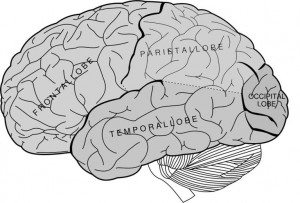Brain structures: All you need to know
 The dominant structure of the human brain is called the cerebrum, which consists of the grey, curly cortex. The cerebrum is divided into two hemispheres (right and left), each consisting of four lobes, and controls higher mental functions. As you can see in Figure 1, the four lobes of the brain are the occipital, temporal, parietal and frontal lobes.
The dominant structure of the human brain is called the cerebrum, which consists of the grey, curly cortex. The cerebrum is divided into two hemispheres (right and left), each consisting of four lobes, and controls higher mental functions. As you can see in Figure 1, the four lobes of the brain are the occipital, temporal, parietal and frontal lobes.

Figure 1
The cortex consists of two hemispheres, each divided into four lobes: frontal, parietal, occipital and temporal.
The cortex includes a number of neurons or brain cells (see Figure 2). These neurons communicate through connection, called synapses. An average brain contains approximately 100 billions neurons. But other types of cells, called glial cells, also play an important role.

Figure 2
This is a neuron. Your brain contains approximately 100 billions of these. Neurons communicate through synapses.
Different areas of the brain are responsible for different functions.
The frontal lobes (behind the forehead) are primarily responsible for decision-making, planning, problem-solving, and certain forms of attention. They are also involved in motor control, certain aspects of language and memory, social behavior and emotions.
- The occipital lobes (at the back of the brain) are devoted to vision.
- The temporal lobes (next to the temples) are responsible mostly for memory formation, language, hearing and object perception.
- The parietal lobes are responsible mostly for certain forms of attention, spatial processing and the manipulation of objects.
To go further and learn more:
- about brain functions / cognitive abilities: A brain teaser for each cognitive ability
- about neurons and synapses : Use It or Lose It, and Cells that Fire together Wire together
- about neuroplasticity: Brain plasticity: How learning changes your brain
——————
Keep learning by reading more articles in the Resources section, and also please consider joining our free monthly Brain Fitness eNewsletter
This new online resource is based on the content from the book The SharpBrains Guide to Brain Fitness (May 2009, $19.95), by Alvaro Fernandez and Dr. Elkhonon Goldberg.
